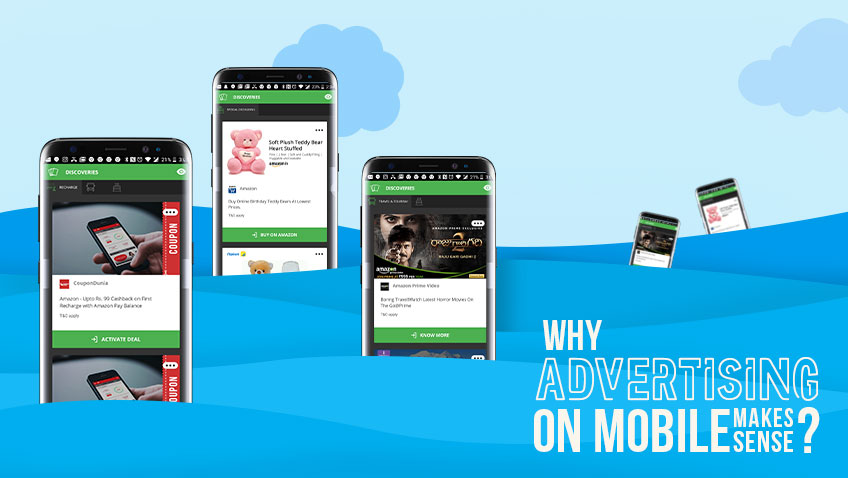Smartphones have truly become the personal device of choice for millions around the world. By 2020, there will be 2.87 billion smartphone users around the world. As per statistics available on Statista, China leads other nations in terms of smartphone usage with 717.31 million users while India follows in at second with 300. 12 million users. By 2018, 61.2 percent of all mobile phone users will be accessing the internet on their phone. If the mentioned data is anything to go by, we can confidently say that reaching out to prospective customers would be most feasible and profitable on the mobile.
With mobile becoming the hub for user activity, businesses should concentrate on making optimum use of the mobile screen to advertise and market their products or services. Shared here are few reasons why you should spend more on advertising on the mobile.
The numbers stack up in favor of mobile
The ever-increasing number of smartphone users who now rely on their preferred device to buy, sell or find something must be the primary motivator for businesses to look at investing in mobile advertising.
I, me, myself, world
The truly personal device tag on the smartphones gives businesses the opportunity to find a toe hold into the personal space of smartphone users by providing them products and services as per their desire and need. Providing users what they want, when they want is a success recipe appreciated by users. Users feel more obliged to consume a product or service when it appears at the exact time or moment of their need instead of the no-relation adverts popping up on their screen, when they are least interested.
Intricately connected through mobile
Not only do 50 percent of smartphone users grab their smartphones first thing in the morning after waking up, they also spend 69 percent of their time, consuming media on their phones. As many as 81 percent of users prefer to do their research on their smartphones before making a purchase, data from Adweek revealed. With smartphones intricately woven into consumer lifestyles, it is a given to reach out to them on a medium that they spend maximum time and prefer to connect on.
Apt opportunity to utilize apps
Advertising on applications can turn out fruitful for businesses and marketers with users spending as much as 89 percent time on different applications. Investing in advertising on applications that relate to a specific industry can ensure that the right user is targeted. There are other opportunities such as advertising on An AI powered keyboard app that provides intent based suggestions to the user. Consider A who has an AI powered keyboard types that he wishes to celebrate his friend B’s birthday. The intent based AI keyboard app picks up on the intent of user A to suggest him places he can pick up a cake or restaurants that will be fit for a birthday bash. The possibility of a product or service getting consumed aligned to a consumer’s intent can save businesses and marketers time and money by not having to delve deep into factors such as consumer persona, region etc. There is sound advice available for businesses looking to advertise through applications in a post published on our blog, titled, ‘Five things to know before you start advertising on mobile apps’.
Stay in sync with competition if not ahead of them
Data from Salesforce states that 71 percent of marketers believe that mobile marketing is core to their business. It also points out that 68 percent businesses have integrated mobile marketing in their overall marketing strategy. Further on, 58 percent of companies surveyed by Salesforce mentioned they had a dedicated mobile marketing team. The spend on mobile advertising that has grown a healthy 60.5 percent to be capped at $63 billion ($83 billion) in 2016 as per IAB Europe, is another sign that mobile advertising has got the industry hooked and anyone not utilizing the opportunity stands to lose out.
A world fastmoving from mobile first to the mobile only model requires that businesses have a comprehensive strategy about utilizing the medium of mobile. Businesses need to design and implement advertising and marketing campaigns that are non-intrusive yet personal and available to users when they desire, on their preferred device.
